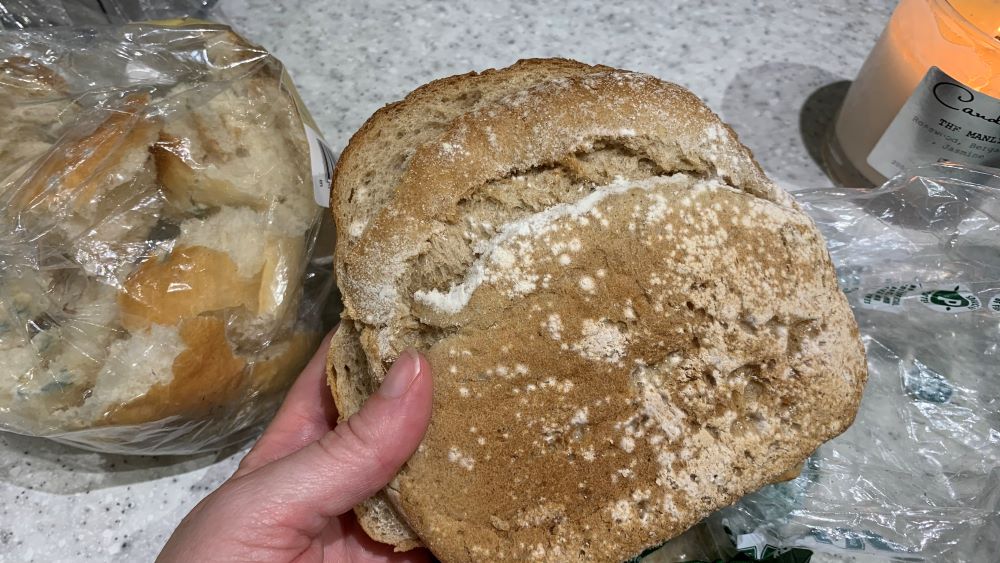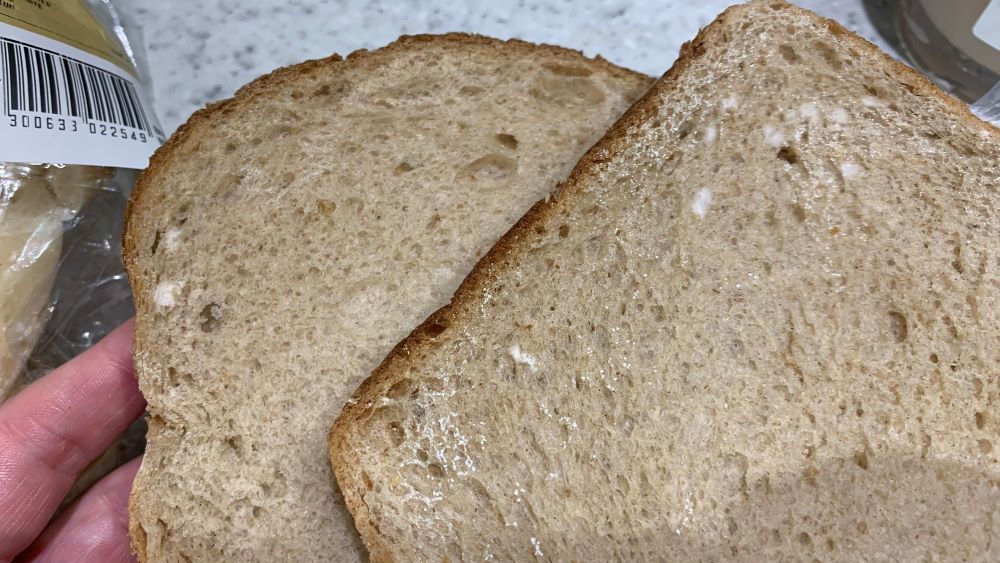You can compost moldy bread and the worms and soil bacteria in your compost will break it down. Moldy bread is partially broken down but it is best to cover it with brown material like straw or hay to stop the mold spores from entering the air. Worms will eat organic matter including moldy bread in small amounts.
This article will explore how to compost moldy bread, the benefits of bread for your compost and how to do this without attracting pests.

How to compost moldy bread – 7 Steps
You can compost moldy bread and it will break down quickly. Any bread including moldy bread can attract pests including mice and rats. These rodents love carbohydrate based foods like bread, cookies and grains so follow these tips to keep them out of your compost.
1. Add small amounts of moldy bread to start
Start by adding small amounts of moldy bread to your compost pile or bin. If you have a small compost pile like me, you can add around 2-3 pieces of moldy bread every 2-3 weeks. This will allow the worms and soil bacteria to break it down quickly.
2. Chop the moldy bread into smaller pieces
Before adding moldy bread to your compost bin it is best if you can tear or chop it into smaller pieces. This will increase the surface area of the bread to allow the soil bacteria to reach more of the bread and break it down quicker.
If the bread is moldy, the best way to break it up into smaller pieces is to use a spade and chop it up. Put the bread on the ground and chop the bread with the space. This means that you won’t have to touch the moldy bread and you can keep away from any mold spores that enter the air.
Another way to break up moldy bread is to leave it in the bag and break it into pieces. You can tear the bread into pieces with your hands and it will keep all of the bread, crumbs and mold trapped.
You can then empty the bag onto you your compost.

3. Dig the bread through the compost
The next step is to dig the bread through your compost pile. Once you have added the bread to the top of your compost, grab a garden fork or garden stirrer and mix it through. This will help to cover the mold, the bread and hide it from visiting pests like mice or rats.
Mixing your compost is important and can help all of the ingredients to break down quicker. This will help to add moisture to the bread, will help the soil bacteria to make contact with the bread and it will break down as quick as possible.
5. Add extra brown material
Another tip to help moldy bread to break down as quick as possible is to add extra brown material. When I add any food scraps I like to add brown material like straw, hay or fall leaves. I will keep a pile of fall leaves near my compost so I can sprinkle some on throughout the year.

6. Put the lid on your compost bin
The next step is to put the lid on your compost bin. Plastic compost bins will come with lids which are designed to keep rodents out. These lids should have minimal gaps and can also have air holes to help the compost to break down quicker.
7. Add other food scraps with moldy bread
Another great tip to help all of the food in your compost to break down as fast as possible is to add a mix of food scraps together. Put your moldy bread together with other food scraps such as carrot peelings, apple cores and strawberry tops. This will keep the soil bacteria in your compost happy and will increase the mix of nutrients in your finished compost.
The more diverse the range of nutrients are in your compost the better it will be for your plants when you get to finally mix the compost into your garden. Most compost piles will take around 6-9 months to fully break down and be ready to add to your compost.
Benefits of composting moldy bread
Adding moldy bread to your compost will add extra food for your soil bacteria and worms to eat. Bread contains a range of nutrients and fiber which will all be broken down and mixed through your soil. The mold will also be broken down into the compost and will disappear.
The mold on your bread will not cause any harm to your compost or any worms that have worked their way into your bin. The mold will be digested by the bacteria and will disappear into the mix.

Negatives of composting moldy bread
The only negatives of adding moldy bread is that handling the bread can make the mold go everywhere, including the air. It is best to keep the mold off of your hands and stop it from going airborne.
You can break the bread up in the bag or throw it on top of your compost and dig it through with the spade. This process will break the bread up into pieces helping it t break down as quick as possible.
How to compost moldy bread | Summary
Moldy bread can be composted in your compost bin or pile. Dig the bread through the compost to keep the mold contained to the compost. You can break the bread up into pieces with a spade and dig it through the mix.
Start by adding 4-6 moldy bread crusts or 1-2 pieces of bread and wait for it to break down before adding more. Put the lid on the bin to keep mice out and you are done.
Happy composting.
I am an accredited practicing dietitian, experienced gardener and a dedicated cook. I love writing and sharing my experience so you can learn from my successes and mistakes.
